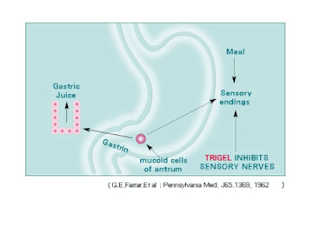Spasmodic
 Spasmodic torticollis, is a painful condition in which your neck muscles contract involuntarily, causing your head to twist or turn to one side. Cervical dystonia can also cause your head to uncontrollably tilt forward or backward.
Spasmodic torticollis, is a painful condition in which your neck muscles contract involuntarily, causing your head to twist or turn to one side. Cervical dystonia can also cause your head to uncontrollably tilt forward or backward.
A rare disorder that can occur at any age, even infancy, cervical dystonia most often occurs in middle-aged people, women more than men. Symptoms generally begin gradually and then reach a point where they don't get substantially worse.
There is no cure for cervical dystonia. The disorder sometimes resolves without treatment, but sustained remissions are uncommon. Injecting botulinum toxin into the affected muscles often reduces the signs and symptoms of cervical dystonia. Surgery may be appropriate in a few cases.
Symptoms
The muscle contractions involved in cervical dystonia can cause your head to twist in a variety of directions, including:
- Chin toward shoulder
- Ear toward shoulder
- Chin straight up
- Chin straight down
The most common type of twisting associated with cervical dystonia is when your chin is pulled toward your shoulder. Some people experience a combination of abnormal head postures. A jerking motion of the head also may occur.
Most people who have cervical dystonia also experience neck pain that can radiate into the shoulders. The disorder also can cause headaches. In some people, the pain from cervical dystonia can be exhausting and disabling.
How can I know if I have Spasmodic?
While the physical examination alone can often confirm a diagnosis of cervical dystonia, it's important to determine if there are underlying conditions causing your signs may include:
- Blood or urine tests. These may reveal the presence of toxins.
- Magnetic resonance imaging (MRI). This type of imaging test may be used to identify and visualize tumors or evidence of stroke.
- Electromyography (EMG). This test measures the electrical activity of muscles. EMG helps evaluate and diagnose muscle and nerve disorders and can help confirm whether you have cervical dystonia or another condition.
Ayurvedic Cure
While no cure has actually been identified for the condition, several natural treatments have been identified that support nerve and muscle function and help regulate cervical dystonia. Magnesium, lysine and iodine are among the most effective treatments for the condition; however, other nutritional supplements are also effective. Regulating the diet by reducing sugar intake and increasing whole, natural foods is also beneficial to the system.
Magnesium: Magnesium is an important nutrient for bodily function. This nutrient regulates blood pressure, supports strong bones and muscles and controls heart rhythm. The nutrient also controls the movement of calcium and vitamin C, which are important factors in maintaining effective nerve function.
Lysine: Lysine is an important amino acid that functions in a variety of ways to treat spasmodic torticollis. The compound has been shown to reduce anxiety by increasing serotonin levels in individuals, which helps reduce the strain of the condition. The nutrient also helps rebuild and repair damaged muscular and skeletal tissue, which also contributes to treatment of the condition.
Iodine: Iodine is a vital trace element that is a component of normal growth and development. Iodine aids in the removal of toxins from the body that may be contributing to the condition. This nutrient also aids the body in the utilization of important minerals like calcium and silicon, which also contribute to effective nerve function.
A condition characterized by involuntary muscle function of the neck, spasmodic torticollis is a painful condition that typically progresses as an individual ages. Effective natural remedies offer treatment with minimal side effects and risks.









0 comments:
Post a Comment